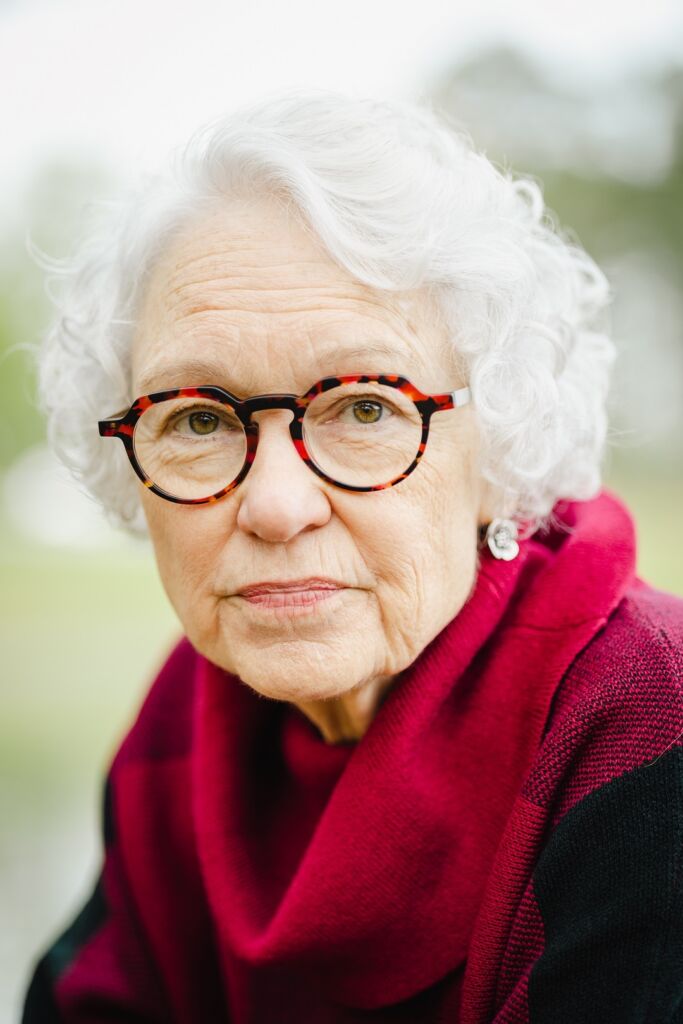ASC Grantee Patricia Raible's Work Tightropes Between the Word and the Image

By Phillip Larrimore
There is a conceptual tightrope between the word and the image on which we daily walk.
This is something that we scarcely notice, if indeed at all, when we say the word “tree,” or look at its picture, or lean against one, though they are by no means the same thing. But for a writer who is also a visual artist, or an artist who is also a writer, this becomes a field of meaning and ideas. Patricia Raible, the recipient of a 2023 ASC Creative Renewal Fellowship, is such an artist.
Patricia began as a writer, majoring in journalism and then English with an emphasis on technical writing. She became adept at synopsizing lengthy business documents into briefs, synthesizing historical data into a readable narrative, and other feats of translating professional argot into language a layperson might understand. She even formed a company—the Writing Company—devoted to this skill.
She also taught college and high school English. And for many years she and her husband, Michael, ran Morning Glory Farm, specializing in organic produce, herbs, and flowers in Union County. But– though she had also always worked with her hands and had studied artmaking since her twenties—visual art only became her true vocation in her fifties.
“A retrospective of the late collage artist Romare Bearden ignited my passion once again,” she said.
Bearden, among collagists, is supreme as a rescuer of memory. Perhaps it is this quality in Bearden’s work that inspired Raible’s quest for “visual archaeology.”
She describes herself as an abstract artist, meaning that she has never reproduced “reality” as a photograph might. Instead, she re-arranges its ingredients. Her process might be described as importing a landscape through texture and layering. They are memory-metaphors rather than depictions.
She describes these textures as “…multilayered and fragmented… created by addition or subtraction from the surface. I may press found objects into the surface, encase materials, paint over them, apply marking and collage, or scrape and incise to reveal layers beneath. One layer may be placed on top of another only to have earlier layers exposed or excavated…. Turning things over, viewing them from various angles and scratching beneath the surface allows me to explore what is not always visible…”
A viewer of such a process might find that the landscapes she evokes are seen not through their appearance but their trace elements.
During this period, she also produced “Standing Stones”—compact, four-sided monuments inspired by the Callanish Standing Stones on the island of Lewis, which she photographed when visiting Scotland. They are 5,000 years old and recur as phantom shapes and leitmotifs both in her freestanding sculptures and her paintings. Whether free-standing or mounted on a wall in the form of thick slabs, is made of limestone plaster or gypsum, textured like lichen, moss, nubby or lacy fabric, sand, incised with pattern or painted with acrylic stirred into a froth and maneuvered with loaded brush.
Poems as well as prayers are hidden in these textures.
The writers she cites, likewise, have a certain verbal texture—what in fabric might be called a “hand”—and range from Emily Dickinson to Jane Kenyon to Wendell Berry to Mary Oliver to Maxine Kumin to Yogi Berra, the philosopher of baseball, and cartoonist Bill Watterson, creator of “Calvin and Hobbes.”
Over time, the Standing Stones and the paintings heavy as slabs have grown difficult for Raible to handle. Rather than repine, she has decided to continue using other, lighter means, and to employ these means to address the question of growing older. For her, it is a matter of broken-ness versus healing.
Her current project is called “The Problem with Aging” but she is in fact solving those problems in ways that she intends to teach. The Creative Renewal Fellowship from ASC has enabled her to explore print mediums including monotypes and collagraph prints, study with a master, buy a printer– which she has already gotten handy at —and explore book- design. Books, in her case, sometime follow the format of a Japanese accordion book, folding and unfolding as a screen, rather than the western format, in which page follows page after page.
As she acquires these new skills, she intends to “share them and my new knowledge through public workshops, classroom instruction and social media…some of these workshops would be devoted to seniors, assisting them in continuing their own creative life…I will also start a book collective not only for professionals but also for anyone, at any skill level…”
With these aims in mind, it seems entirely plausible that Patricia Raible will make some of her best work later in life. It also makes the ASC’s award to her of a Creative Renewal Fellowship seem entirely apt.

